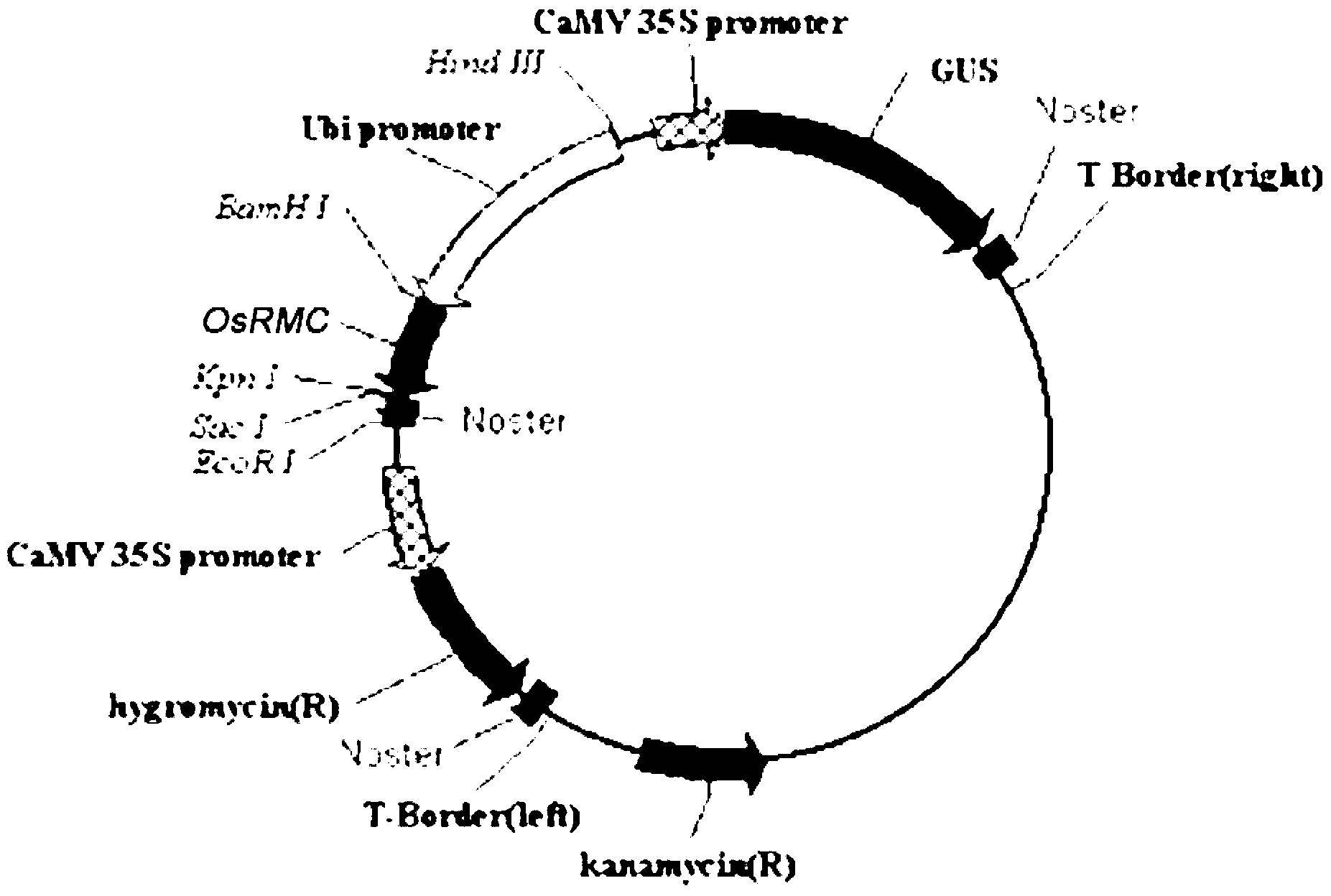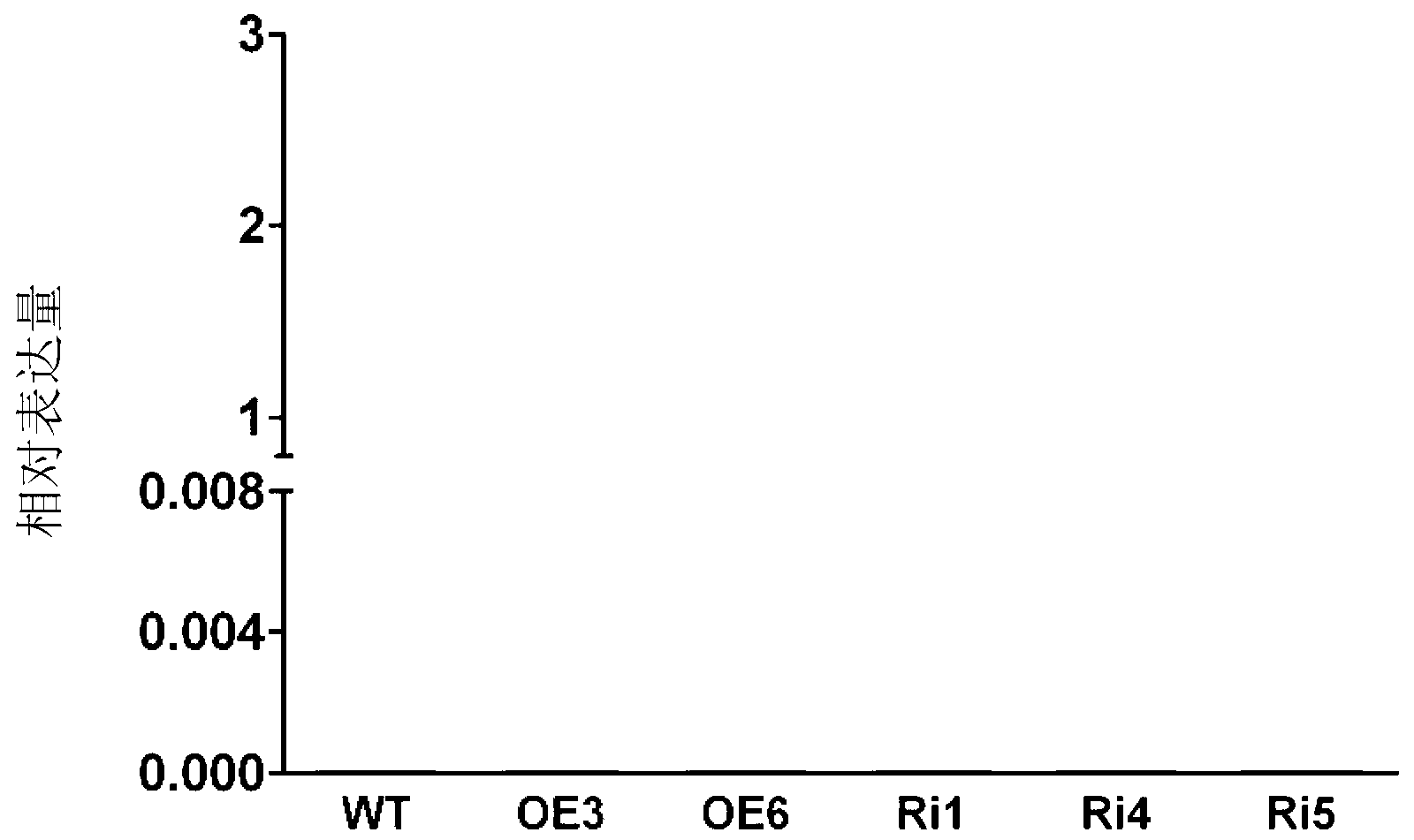Method adopting OsRMC protein to cultivate transgenic plant with improved iron absorption capability
A technology of transgenic plants and absorption capacity, applied in botany equipment and methods, biochemical equipment and methods, applications, etc., can solve the problems of inability to absorb and utilize plants, and achieve the effect of increasing plant yield
- Summary
- Abstract
- Description
- Claims
- Application Information
AI Technical Summary
Problems solved by technology
Method used
Image
Examples
Embodiment 1
[0047] Embodiment 1, construction of recombinant plasmid
[0048] 1. Construction of OsRMC gene overexpression vector
[0049] 1. Extract the total RNA of the rice variety "Zhonghua 10" and reverse transcribe it into cDNA.
[0050] 2. Using the cDNA in step 1 as a template, perform PCR amplification with a primer pair composed of F1 and R1 to obtain a PCR amplification product.
[0051] F1: 5'-CGC GGATCC ATGGCGCGGTGCACTTTG-3';
[0052] R1: 5'-CGG GGTACC CTACTCACGCAGCACCACC-3'.
[0053] 3. Digest the PCR amplified product in step 2 with restriction endonucleases BamHI and KpnI, and recover the digested product.
[0054] 4. Digest the vector pUN1301 with restriction endonucleases BamHI and KpnI to recover a vector backbone of about 13876bp.
[0055] 5. Digest the product of step 3 and the vector skeleton of step 4 to obtain the OsRMC gene overexpression vector (also known as recombinant plasmid pUN::OsRMC). According to the sequencing results, the structure of the OsR...
Embodiment 2
[0067] Embodiment 2, OsRMC gene overexpression rice or the acquisition of OsRMC gene suppressed expression rice
[0068] 1. Obtaining of OsRMC gene overexpressed rice
[0069] The OsRMC gene overexpression vector constructed in Example 1 was introduced into the rice variety "Zhonghua 10" through the method of rice genetic transformation mediated by Agrobacterium strain EHA105 (Xu et al., 2005, Plant Cell Rep. Mature embryo callus, after co-cultivation, hygromycin resistance screening, differentiation, rooting, seedling hardening, transplanting, T 0 Substitute plants.
[0070] Will T 0 T 1 Generation seeds, cultivate T 1 generation seed to get T 1 Substitute plants. Will T 0 Generation plants and T 1 The generation plants were carried out GUS staining respectively, and the method was as follows: Take 2-3 mm of the blade tip of rice seedlings grown for two weeks and use GUS staining solution (solvent is pH7. / L EDTA, 0.5mmol / L potassium ferricyanide, and 1mg / mL X-Gluc) ...
Embodiment 3
[0089] Embodiment 3, the tolerance effect of transgenic plants to low iron stress
[0090] Randomly select the T of an OsRMC gene overexpression line (OE3 line) 5 For the 1-week-old seedlings of generation plants, T 5 For the 1-week-old seedlings of the generation plants, the 1-week-old seedlings of the rice variety "Zhonghua 10" (WT) were taken, and the T 5 For the 1-week-old seedlings of the generation plant, take the T of the empty vector plant B 5 The 1-week-old seedlings of generation plants were identified as follows:
[0091] Experimental group: plants were continuously cultured in nutrient solution B for 20 days;
[0092] Control group: the plants were continuously cultured in nutrient solution A for 20 days.
[0093] After the grouping process is completed, take pictures, measure the phenotypic parameters of the plants (dry weight of the aboveground part, dry weight of the underground part and plant height), and detect the chlorophyll content of the leaves of the ...
PUM
 Login to View More
Login to View More Abstract
Description
Claims
Application Information
 Login to View More
Login to View More - R&D
- Intellectual Property
- Life Sciences
- Materials
- Tech Scout
- Unparalleled Data Quality
- Higher Quality Content
- 60% Fewer Hallucinations
Browse by: Latest US Patents, China's latest patents, Technical Efficacy Thesaurus, Application Domain, Technology Topic, Popular Technical Reports.
© 2025 PatSnap. All rights reserved.Legal|Privacy policy|Modern Slavery Act Transparency Statement|Sitemap|About US| Contact US: help@patsnap.com



